仁爱版七年级上册Unit 1 Topic 1 Welcome to China!Section A 课件(共41张PPT)
文档属性
| 名称 | 仁爱版七年级上册Unit 1 Topic 1 Welcome to China!Section A 课件(共41张PPT) | 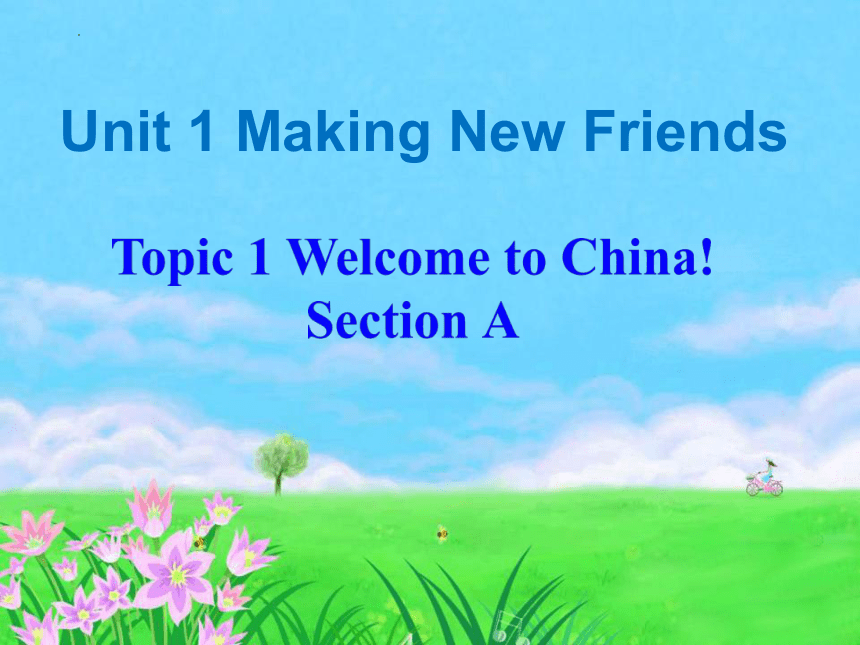 | |
| 格式 | pptx | ||
| 文件大小 | 6.7MB | ||
| 资源类型 | 教案 | ||
| 版本资源 | 仁爱科普版 | ||
| 科目 | 英语 | ||
| 更新时间 | 2022-08-26 10:03:33 | ||
图片预览

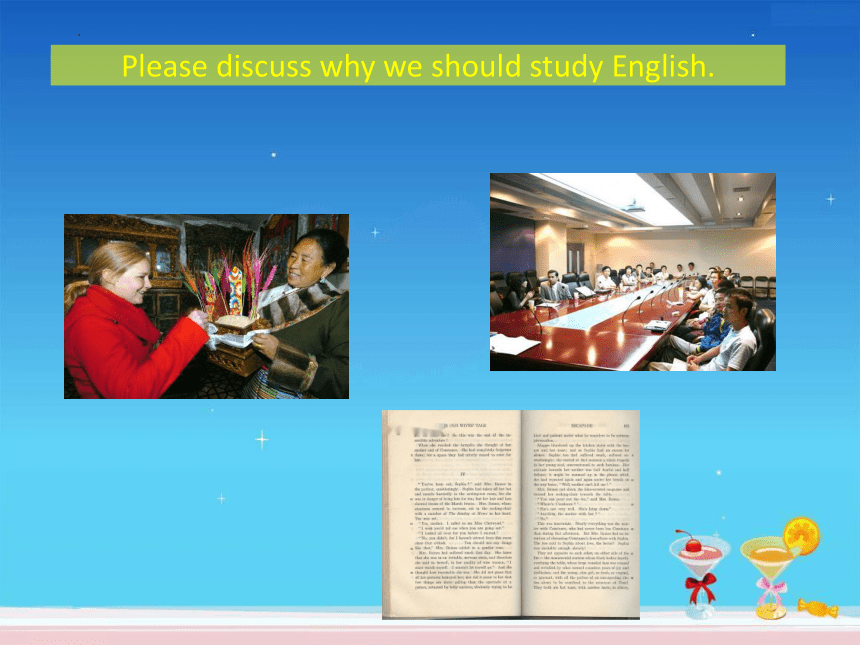
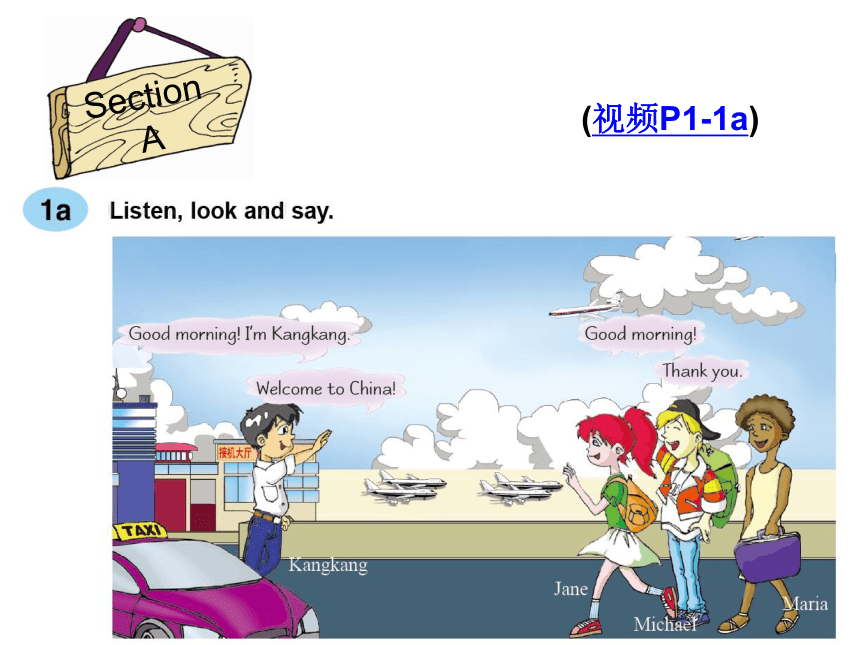



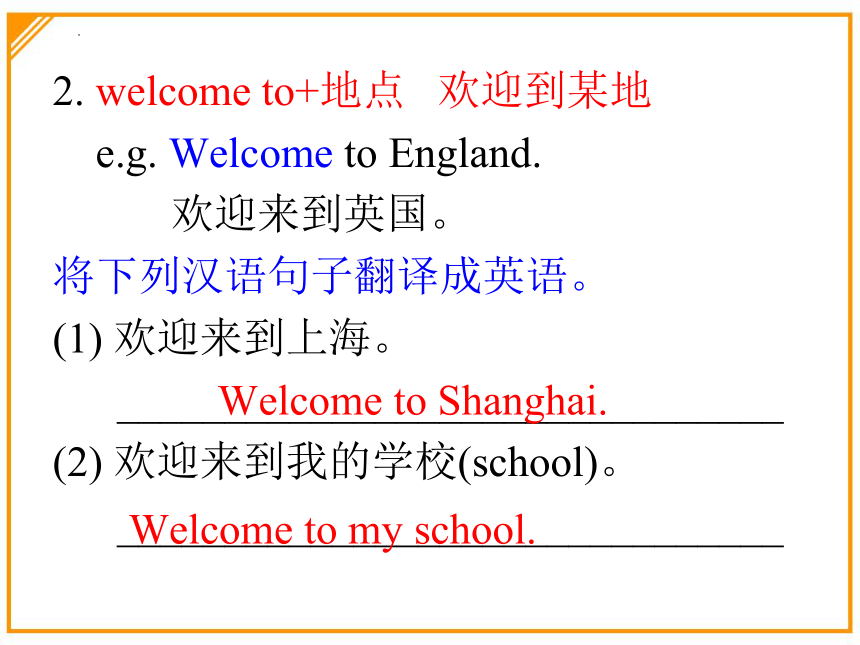

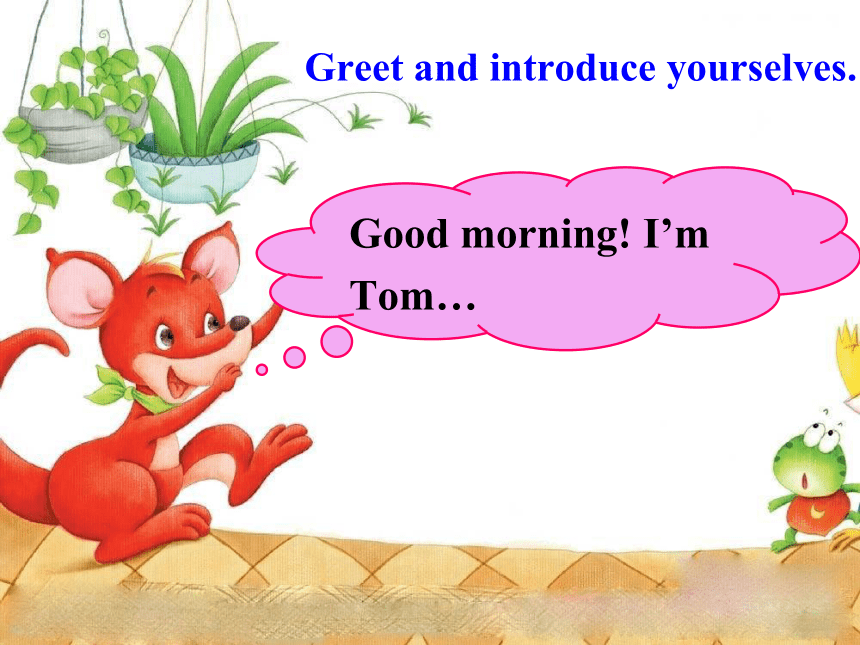
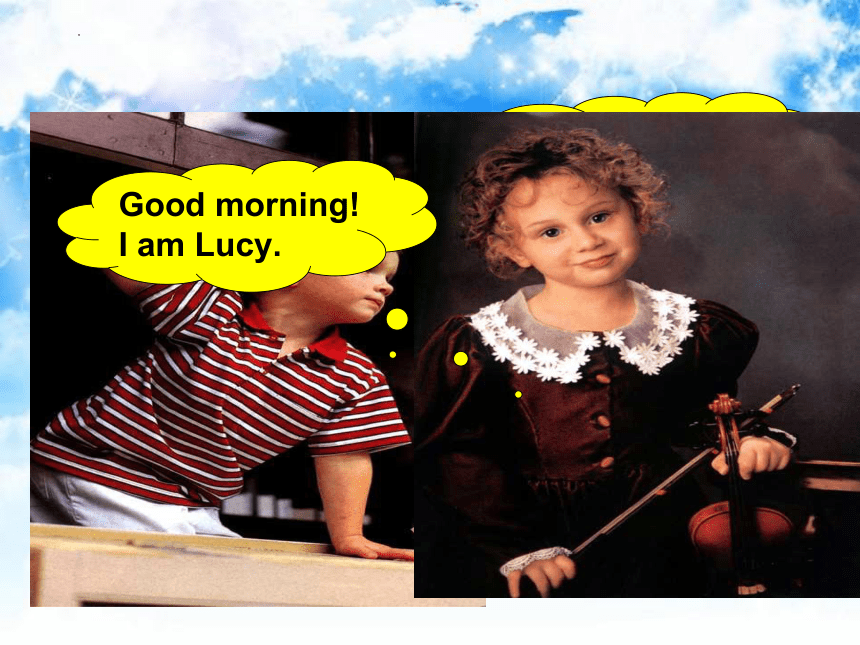

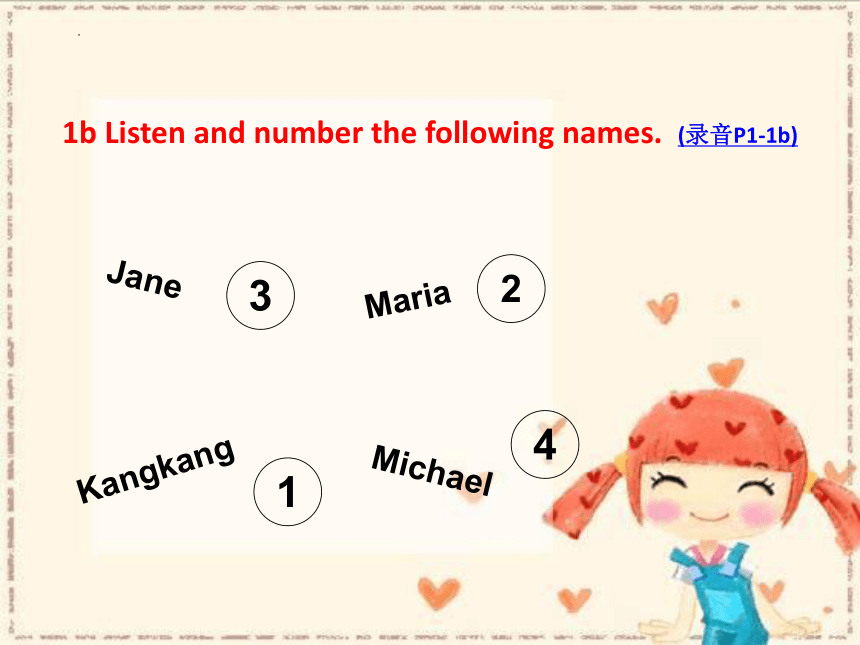
文档简介
(共39张PPT)
Topic 1 Welcome to China!
Section A
Unit 1 Making New Friends
Please discuss why we should study English.
Section
A
Kangkang
Michael
Jane
Maria
(视频P1-1a)
问候他人
Good morning!
Good morning!
1. Good morning 意为____________
回答Good morning:______________。
Good morning!
早上好。
Good morning是较正式的问候语,常用于早晨或上午(中午12点之前)向他人问候。如果对方是我们熟悉的人,还可以说:“Morning!”。
【提示】人们在下午、晚上见面时可以分别问候Good afternoon、Good evening。对方应答也是Good afternoon、Good evening。
【拓展】
Good night!只在晚上说再见或上床睡觉前用,表示“再见!”或“晚安!”,不用以打招呼。
答语仍为“Good night!”
2. welcome to+地点 欢迎到某地
e.g. Welcome to England.
欢迎来到英国。
将下列汉语句子翻译成英语。
(1) 欢迎来到上海。
_______________________________
(2) 欢迎来到我的学校(school)。
_______________________________
Welcome to Shanghai.
Welcome to my school.
3. Thank you. = Thanks. 谢谢!
用于表达感谢。
Good morning! I’m Tom…
Greet and introduce yourselves.
Good morning!
I’m Sam.
Good morning!
I am Lucy.
the USA
China
Hong Kong
Shanghai
practice
Good morning!
I am…
Good morning!
I am …
Welcome to China.
1b Listen and number the following names. (录音P1-1b)
Maria
2
Jane
4
1
3
Kangkang
Michael
Look, listen and understand.
Hello!
I’m Kangkang.
Are you Michael
Hello!
Hello! Are you Maria
No, I’m not. I’m Jane.
Nice to meet you, too.
Oh, nice to meet you, Jane.
Welcome to China!
Thanks.
(视频P1-2a)
Yes, I am.
Hi, Maria!
Hi, Kangkang!
4. hi是人们见面时常用的问候语,有
时为了引起对方注意也用hello, 意为
_____________。hi可与之互换,不过,hi比hello更常用,显得更亲近、随和。
“喂”、“你好”
Hello与Hi都用于口语,使用时不受时间的限制。英美人一般在打招呼时,也说称呼语。如:Hi, Dale! 喂,戴尔!
需要大家注意的是,在打电话时,多用hello,而很少用hi。另外,还要注意的是,对老师、上级、年长者以及有身份地位的人打招呼时,一般不用hello或hi,以免对其不尊重。
_______, Miss Wang!
_______, students!
Hello
Hello/ Hi
中国人与外国人打招呼的差异
“吃了吗”“去哪儿”是中国人习惯的打招呼方式,而西方人就简单问声好,一个“Hello”就好!
5. be动词am、is和are,它们都表示“是”的意思,但三者之间也有区别。
e.g. I am Li Hui. 我是李辉。
Are you a student
你是一名学生吗?
am与第一人称单数的I连用,are则与第
二人称的________连用。
you
He is my brother. 他是我弟弟。
She is a nice girl.
她是个善良的女孩。
It is a map. 它是一幅地图。
is与第三人称单数he、she和it连用。
可以用一则简单的口诀来记忆这些用法:我“是”am,你“是”are, is用在他、她、它。
用am、 is或are完成下面的对话。
A: Hello, I ______ Alan. ______ you Dale
B: No. I ______ Jim. How ______ you
A: Fine, thank you. ______ it a ruler
B: Yes, it ______ a good ruler.
am
Are
am
are
Is
is
6. Are you+人名 你是……
肯定回答: Yes, I am. (不能缩写)
否定回答: No, I am not.
缩写:No, I’m not.
7. no与not
no与not均有“不;不是”的意思,但它们的用法有所区别。
no可单独使用,主要用于对一般疑问句的否定回答,其反义词为yes。
而not不能单独使用,通常放在be动词(am, is, are)之后,帮助构成否定句,其中is not可缩写成isn’t;are not可缩写成aren’t;am与not不能缩写。
e.g. —Are they your rulers
—No, they aren’t.
I am not Jenny.
They are not / aren’t my friends.
Her name (名字) is not / isn’t Linda.
用no或not完成下列句子或对话。
1) I am ____ fine.
2) This is ____ my dictionary.
3) There is ____ ruler in my backpack.
4) —Is that your bike
—____. It is ____ my bike.
not
not
no
No
not
8. Nice to meet you. 很高兴认识你。
初次见面使用,说话的双方之前不认 识,以表示礼貌。
e.g. Glad to meet you.
=I’m glad to meet you.
Pleased to meet you.
=I’m pleased to meet you.
Nice to meet you.
=It’s nice to meet you.
回答: Nice to meet you, too. too, “也”, 只能用在肯定句中, 一般放在句尾, 并用逗号隔开。
e.g. He is a boy, too.
总结
学英语,讲礼貌,招呼用语来报到。
早上见面问声好,Good morning!不可少;
如果下午见了面,Good afternoon!最常见;
晚上礼节也必要,Good evening!晚上好。
不管是早还是晚,熟人问候最简单,
问声Hello! 或者Hi!,
再见道声 Goodbye! See you later也对味。
Notice
当别人问你“Are you … ”时,否定回答应为:
No, I am not. I am ... / No. I am ...。
注:不能只回答No, I am not. 英语中,这样的回答会被认为是不礼貌的行为。
Nice to see you. 答语通常为Nice to see you, too.
这样的问候常在以下两种情景中使用:
1.双方初次见面经人介绍后互相问候。
2.熟悉的人好久不见,偶然相逢时表达双方见面后的
高兴心情。
Are you Lily
Yes, I am.
Thanks.
Welcome to China !
Practice.
Hello!
________!
Practice.
Hello
Nice to see you, Yingying.
Nice to see you, too,
Huanhuan.
_________________________
_______________
Listen, say and trace.
(录音P2-3a)
A a
B b
D d
E e
F f
G g
Listen and number the following letters. Then circle the letters with the same sound as Bb.
C c
( )
( )
( )
( )
( )
( )
/i:/
1
2
3
7
(录音P2-3b)
( )
4
5
6
Play the English letter games:
Each student writes one of the English letters (big or small) on the paper, and some students go to the front of the classroom and hand up their paper. If you see the big letter, but yours is the small, please go to the big letter. If you see the small letter, but yours is the big, please go to the small letter, and say: We are “ b, B”.
b
B
For example:
w
We are “b, B”.
Play the English letter games:
① The first student in the first team says “A” quickly, the second student follows with “B”,and the other students follow with “C,D,E,F,G,A,B ...” one by one.
Welcome to China !
— Good morning!
— Good morning! I’m Kangkang.
Hello! / Hi!
— Are you Maria
— Yes, I am. / No, I’m not. I’m Jane.
—Nice to meet you.
— Nice to meet you, too.
Thanks.
Sum up
1. Please imagine and list some objects which have the same shape with the English letters.
For example:
Ears are like “B”.
The moon is like “C” or “D”.
…
Project
2. Give yourself an English name after class.
Project
Good-bye!
Topic 1 Welcome to China!
Section A
Unit 1 Making New Friends
Please discuss why we should study English.
Section
A
Kangkang
Michael
Jane
Maria
(视频P1-1a)
问候他人
Good morning!
Good morning!
1. Good morning 意为____________
回答Good morning:______________。
Good morning!
早上好。
Good morning是较正式的问候语,常用于早晨或上午(中午12点之前)向他人问候。如果对方是我们熟悉的人,还可以说:“Morning!”。
【提示】人们在下午、晚上见面时可以分别问候Good afternoon、Good evening。对方应答也是Good afternoon、Good evening。
【拓展】
Good night!只在晚上说再见或上床睡觉前用,表示“再见!”或“晚安!”,不用以打招呼。
答语仍为“Good night!”
2. welcome to+地点 欢迎到某地
e.g. Welcome to England.
欢迎来到英国。
将下列汉语句子翻译成英语。
(1) 欢迎来到上海。
_______________________________
(2) 欢迎来到我的学校(school)。
_______________________________
Welcome to Shanghai.
Welcome to my school.
3. Thank you. = Thanks. 谢谢!
用于表达感谢。
Good morning! I’m Tom…
Greet and introduce yourselves.
Good morning!
I’m Sam.
Good morning!
I am Lucy.
the USA
China
Hong Kong
Shanghai
practice
Good morning!
I am…
Good morning!
I am …
Welcome to China.
1b Listen and number the following names. (录音P1-1b)
Maria
2
Jane
4
1
3
Kangkang
Michael
Look, listen and understand.
Hello!
I’m Kangkang.
Are you Michael
Hello!
Hello! Are you Maria
No, I’m not. I’m Jane.
Nice to meet you, too.
Oh, nice to meet you, Jane.
Welcome to China!
Thanks.
(视频P1-2a)
Yes, I am.
Hi, Maria!
Hi, Kangkang!
4. hi是人们见面时常用的问候语,有
时为了引起对方注意也用hello, 意为
_____________。hi可与之互换,不过,hi比hello更常用,显得更亲近、随和。
“喂”、“你好”
Hello与Hi都用于口语,使用时不受时间的限制。英美人一般在打招呼时,也说称呼语。如:Hi, Dale! 喂,戴尔!
需要大家注意的是,在打电话时,多用hello,而很少用hi。另外,还要注意的是,对老师、上级、年长者以及有身份地位的人打招呼时,一般不用hello或hi,以免对其不尊重。
_______, Miss Wang!
_______, students!
Hello
Hello/ Hi
中国人与外国人打招呼的差异
“吃了吗”“去哪儿”是中国人习惯的打招呼方式,而西方人就简单问声好,一个“Hello”就好!
5. be动词am、is和are,它们都表示“是”的意思,但三者之间也有区别。
e.g. I am Li Hui. 我是李辉。
Are you a student
你是一名学生吗?
am与第一人称单数的I连用,are则与第
二人称的________连用。
you
He is my brother. 他是我弟弟。
She is a nice girl.
她是个善良的女孩。
It is a map. 它是一幅地图。
is与第三人称单数he、she和it连用。
可以用一则简单的口诀来记忆这些用法:我“是”am,你“是”are, is用在他、她、它。
用am、 is或are完成下面的对话。
A: Hello, I ______ Alan. ______ you Dale
B: No. I ______ Jim. How ______ you
A: Fine, thank you. ______ it a ruler
B: Yes, it ______ a good ruler.
am
Are
am
are
Is
is
6. Are you+人名 你是……
肯定回答: Yes, I am. (不能缩写)
否定回答: No, I am not.
缩写:No, I’m not.
7. no与not
no与not均有“不;不是”的意思,但它们的用法有所区别。
no可单独使用,主要用于对一般疑问句的否定回答,其反义词为yes。
而not不能单独使用,通常放在be动词(am, is, are)之后,帮助构成否定句,其中is not可缩写成isn’t;are not可缩写成aren’t;am与not不能缩写。
e.g. —Are they your rulers
—No, they aren’t.
I am not Jenny.
They are not / aren’t my friends.
Her name (名字) is not / isn’t Linda.
用no或not完成下列句子或对话。
1) I am ____ fine.
2) This is ____ my dictionary.
3) There is ____ ruler in my backpack.
4) —Is that your bike
—____. It is ____ my bike.
not
not
no
No
not
8. Nice to meet you. 很高兴认识你。
初次见面使用,说话的双方之前不认 识,以表示礼貌。
e.g. Glad to meet you.
=I’m glad to meet you.
Pleased to meet you.
=I’m pleased to meet you.
Nice to meet you.
=It’s nice to meet you.
回答: Nice to meet you, too. too, “也”, 只能用在肯定句中, 一般放在句尾, 并用逗号隔开。
e.g. He is a boy, too.
总结
学英语,讲礼貌,招呼用语来报到。
早上见面问声好,Good morning!不可少;
如果下午见了面,Good afternoon!最常见;
晚上礼节也必要,Good evening!晚上好。
不管是早还是晚,熟人问候最简单,
问声Hello! 或者Hi!,
再见道声 Goodbye! See you later也对味。
Notice
当别人问你“Are you … ”时,否定回答应为:
No, I am not. I am ... / No. I am ...。
注:不能只回答No, I am not. 英语中,这样的回答会被认为是不礼貌的行为。
Nice to see you. 答语通常为Nice to see you, too.
这样的问候常在以下两种情景中使用:
1.双方初次见面经人介绍后互相问候。
2.熟悉的人好久不见,偶然相逢时表达双方见面后的
高兴心情。
Are you Lily
Yes, I am.
Thanks.
Welcome to China !
Practice.
Hello!
________!
Practice.
Hello
Nice to see you, Yingying.
Nice to see you, too,
Huanhuan.
_________________________
_______________
Listen, say and trace.
(录音P2-3a)
A a
B b
D d
E e
F f
G g
Listen and number the following letters. Then circle the letters with the same sound as Bb.
C c
( )
( )
( )
( )
( )
( )
/i:/
1
2
3
7
(录音P2-3b)
( )
4
5
6
Play the English letter games:
Each student writes one of the English letters (big or small) on the paper, and some students go to the front of the classroom and hand up their paper. If you see the big letter, but yours is the small, please go to the big letter. If you see the small letter, but yours is the big, please go to the small letter, and say: We are “ b, B”.
b
B
For example:
w
We are “b, B”.
Play the English letter games:
① The first student in the first team says “A” quickly, the second student follows with “B”,and the other students follow with “C,D,E,F,G,A,B ...” one by one.
Welcome to China !
— Good morning!
— Good morning! I’m Kangkang.
Hello! / Hi!
— Are you Maria
— Yes, I am. / No, I’m not. I’m Jane.
—Nice to meet you.
— Nice to meet you, too.
Thanks.
Sum up
1. Please imagine and list some objects which have the same shape with the English letters.
For example:
Ears are like “B”.
The moon is like “C” or “D”.
…
Project
2. Give yourself an English name after class.
Project
Good-bye!
同课章节目录
- Unit 1 Playing Sports
- Topic 1 I'm going to play basketball.
- Topic 2 I'll kick you the ball again.
- Topic 3 The school sports meet is coming.
- Unit 2 Keeping Healthy
- Topic 1 You should brush your teeth twice a day.
- Topic 2 I must ask him to give up smoking.
- Topic 3 Must we exercise to prevent the flu?
- Unit 3 Our Hobbies
- Topic 1 What's your hobby?
- Topic 2 What sweet music!
- Topic 3 What were you doing at this time yesterday
- Unit 4 Our World
- Topic 1 What's the strongest animal on the farm?
- Topic 2 How can we protect ourselves from the eart
- Topic 3 The Internet makes the world smaller.
